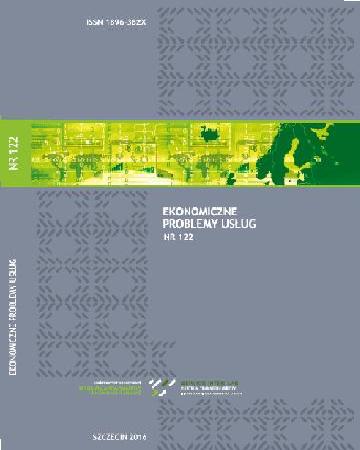
ISSN: 1896-382X
eISSN: 2353-2866
OAI
DOI: 10.18276/epu.2017.129-12



Issue archive /
nr 129 2017
Proinnowacyjny rozwój regionalny w Polsce jako kryterium analizy skupień
(Proinnovative regional development in Poland as a criterion for cluster analysis)
| Authors: |
Rafał
Klóska
Uniwersytet Szczeciński Wydział Zarządzania i Ekonomiki Usług |
| Keywords: | innovation regional development cluster analysis |
| Data publikacji całości: | 2017 |
| Page range: | 9 (143-151) |
| Klasyfikacja JEL: | O18 C19 R59 |
Abstract
Increasing the potential to create, diffuse and absorb innovation is nowadays one of the strategic challenges for regional policy. In contemporary conditions, innovation is becoming a determinant of regional development. Most frequently researchers focus on the exploration of one of these multidimensional phenomena, but the relationship between them allows to approach them both separately and in combination. It is substantively justified as taking into consideration the whole complexity of regional innovation and regional development, both these economic categories should lead to positive changes, such as quantitative growth and qualitative progress of particu¬lar areas. Their components, often difficult to capture and of substitutive nature, complement one another aiming at the same goal. The carefully selected methods of multivariate statistical analysis (MSA) were used in empirical studies, as a result of which voivodeships in Poland were grouped on the basis ofproinnovative regional development. The aim of the article is to classify multi-character¬istic objects at the basic regional level in Poland considering the adopted primary criterion allowing regional innovation and regional development to be considered as a whole.
Download file
Article file
Bibliography
| 1. | Basiura, B. (2005). Empiryczny test jednorodności dla metody Warda stosowanej do analizy zbioru województw Polski. Prace Naukowe Akademii Ekonomicznej we Wrocławiu, 1076: Taksonomia, 12. Klasyfikacja i analiza danych-teoria i zastosowania, 171-179. |
| 2. | Grabiński, T. (1992). Metody taksonometrii. Kraków: Wydawnictwo Akademii Ekonomicznej w Krakowie. |
| 3. | Grabiński, T., Sokołowski, A. (1984). Z badań nad efektywnością wybranych procedur taksonomicznych. Zeszyty Naukowe Akademii Ekonomicznej w Krakowie, 181, 63-80. |
| 4. | Klóska, R. (2014). Rozwój regionalny w Polsce - studium teoretyczno-badawcze. W: L. Woszczek, T. Grabiński, A. Tabor (red.), Kompetencje, wiedza, umiejętności. Teoria i praktyka w roz¬woju nauki, społeczeństwa i gospodarki (s. 133-140). Chrzanów: Wydawnictwo WSPiM w Chrzanowie. |
| 5. | Klóska, R. (2015). Innowacyjność jako determinanta rozwoju regionalnego w Polsce. Szczecin: Wydawnictwo Naukowe Uniwersytetu Szczecińskiego. |
| 6. | Klóska, R. (2016). Proinnovative Regionalentwicklung in Polen. Ekonomiczne Problemy Usług, 125, 201-211. |
| 7. | Migdał-Najman, K. (2011). Ocena jakości wyników grupowania - przegląd bibliografii. Przegląd Statystyczny, 3-4, 281-299. |
| 8. | Milligan, G.W. (1996). Clustering Validation: Results and Implications for Applied Analyses. |
| 9. | W: P. Arabie, L.J. Hubert, G. de Soete (red.), Clustering and Classification. Singapore: World Scientific. |
| 10. | Milligan, G.W., Cooper, M.C. (1985). An Examination of Procedures for Determining the Number of Clusters inaData Set. Psychometrika. 2, 159-179. |
| 11. | Ward, J.H. (1963). Hierarchical grouping to optimize an objective function. Journal of the American Statistical Association, 58, 236-244. |